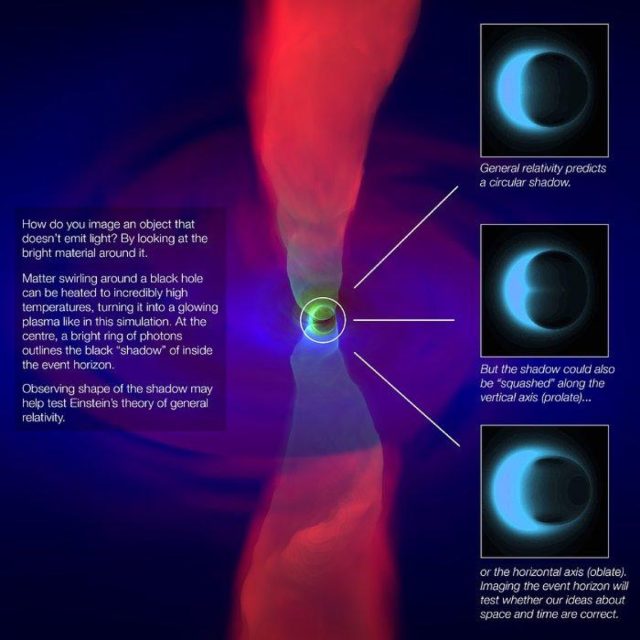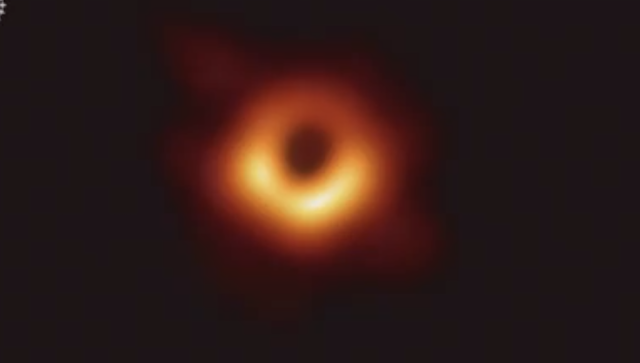At the heart of our Milky Way galaxy lurks a supermassive black hole more than four million times the mass of our Sun. Scientists with the international Event Horizon Telescope (EHT) collaboration have now produced the first image of that black hole, showing that it has a ring structure. The collaboration made the announcement during a livestreamed press conference this morning from the European Southern Observatory's headquarters in Munich, Germany, as well as numerous other simultaneous press conferences around the world. Six papers about the research have been published in a special issue of The Astronomical Journal Letters.
In 1933, physicist Karl Jansky noticed a radio signal coming from somewhere in the constellation Sagittarius, near the center of our Milky Way galaxy, which he dubbed Sagittarius A. Later research revealed that the source actually had several overlapping components, one of which (identified in 1974) was particularly bright and compact. It was named Sagittarius A* (pronounced A-star). It's so named because (per co-discoverer Robert Brown) the radio source was "exciting," and in physics, the excited states of atoms are denoted with an asterisk. Physicists have been convinced since the 1980s that the central component of Sagittarius A*—and the source of all those radio emissions—was likely a supermassive black hole, similar to those thought to be at the center of most spiral and elliptical galaxies.
The only way to "see" a black hole is to image the shadow created by light as it bends in response to the object's powerful gravitational field. As Ars' John Timmer reported back in 2019, the EHT isn't a telescope in the traditional sense. Instead, it's a collection of telescopes scattered around the globe. The EHT is created by interferometry, which uses light in the microwave regime of the electromagnetic spectrum, captured at different locations. These recorded images are combined and processed to build an image with a resolution similar to that of a telescope the size of the most distant locations. Interferometry has been used at facilities like ALMA (the Atacama Large Millimeter/submillimeter Array), where telescopes can be spread across 16 km of desert.

ESO/N. Bartmann/A. Broderick/C.K. Chan/D. Psaltis/F. Ozel
In theory, there's no upper limit on the size of the array, but to determine which photons originated simultaneously at the source, you need very precise location and timing information on each of the sites. And you still have to gather sufficient photons to see anything at all. So atomic clocks were installed at many of the locations, and exact GPS measurements were built up over time. For the EHT, the large collecting area of ALMA—combined with choosing a wavelength in which supermassive black holes are very bright—ensured sufficient photons. The result is a telescope that can do the equivalent of reading the year stamped on a coin in Los Angeles from New York City—assuming the coin was glowing at radio wavelengths.



3175x175(CURRENT).thumb.jpg.b05acc060982b36f5891ba728e6d953c.jpg)

Recommended Comments
There are no comments to display.
Join the conversation
You can post now and register later. If you have an account, sign in now to post with your account.
Note: Your post will require moderator approval before it will be visible.